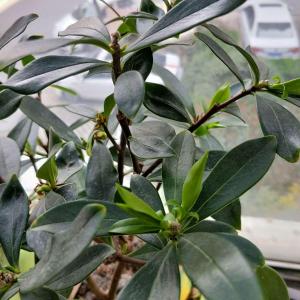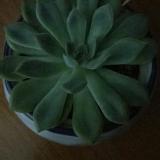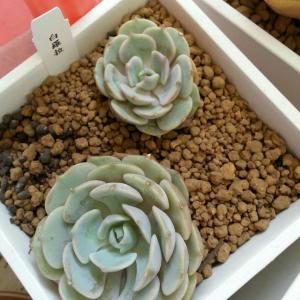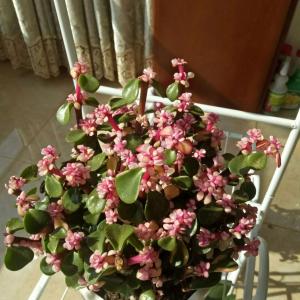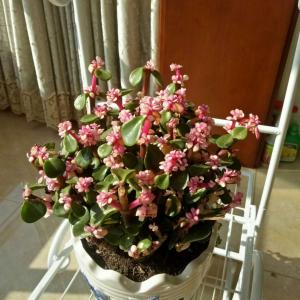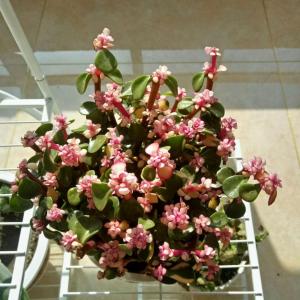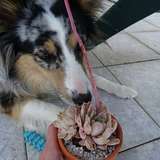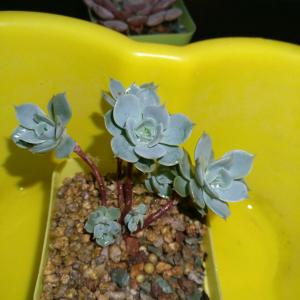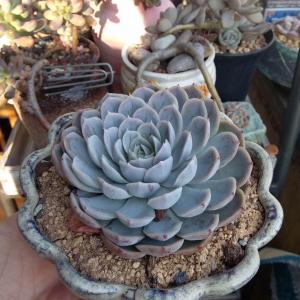文章
Miss Chen
2018年03月08日

Description: This perennial wildflower is 2–3½' tall, sometimes branching in the upper half. The stems are light green and usually hairless; however, some variants of this species have pubescent stems. Alternate compound leaves occur at intervals along the stems; they are trifoliate and their leaflets are extended horizontally in relation to the ground. Individual leaflets are up to 3½" long and ¾" across; they are 3-6 times as long as they are wide. Some variants of this species have more narrow leaflets than others. The terminal leaflet is the same length or a little longer than the lateral leaflets. The leaflets are elliptic to oblong in shape and smooth along their margins. Their upper surfaces are medium green and glabrous, while their lower surfaces are pale to medium green and covered with appressed white hairs. The petioles of the compound leaves are up to 2" long, light green, and mostly hairless. At the base of each petiole, there is a pair of tiny deciduous stipules that are linear-lanceolate; these stipules soon wither away. The petiolules (secondary petioles) of the lateral leaflets are very short (less than 1/8" or 3 mm.), while the petiolules of the terminal leaflets are longer (up to ½").
Flowers
The upper stems terminate in either racemes or narrow panicles of flowers. The branches of each inflorescence are light green and covered with hooked hairs. Individual flowers are ¼" long (or a little more), consisting of 5 petals, a short tubular calyx with teeth, an ovary with a single style, and several hidden stamens. The flowers have a typical pea-like structure, consisting of an upright banner and 2 lateral wings that enclose a central keel. The petals are pink to rosy pink; at the base of the upper petal (banner), there are 1-2 tiny patches of yellow. The green calyx is covered with hooked hairs. The slender petioles of the flowers are about ½" long; they are green to reddish purple and also covered with hooked hairs. The blooming period occurs from mid-summer to early fall and lasts about 1–1½ months. There is no noticeable floral scent. Fertile flowers are replaced by flat loments (a type of seedpod) that are about ½–1½" long. Each loment consists of 2-6 rounded segments, a short stipe, and sometimes a short beak. Each segment of a loment is more rounded along the bottom than along the top; it contains a single seed. The loments are covered with hooked hairs. The root system consists of an elongated caudex with fibrous roots. This wildflower spreads by reseeding itself.
Cultivation: The preference is partial sun, mesic to dry-mesic conditions, and sandy or rocky soil.

Range & Habitat: The native Panicled Tick Trefoil is occasional in all areas of Illinois, except the NW section, where it is rare or absent (see Distribution Map). Habitats consist of thinly wooded bluffs, rocky open woodlands, sandy open woodlands, sandy savannas and typical savannas, woodland edges, thickets, rocky glades, and partially shaded roadside embankments. This wildflower is a pioneer species that prefers some disturbance from wildfires, selective logging, and others causes.
Faunal Associations: Long-tongued bees collect pollen from the flowers; these relatively uncommon floral visitors include bumblebees (Bombus spp.), leaf-cutting bees (Megachile spp.), and long-horned bees (Melissodes spp.). Other insects feed on the leaves, flowers, and seeds of Desmodium spp. (Tick Trefoils). For example, the caterpillars of several skippers feed on the leaves: Achalarus lyciades (Hoary Edge), Epargyreus clarus (Silver-Spotted Skipper), Thorybes bathyllus (Southern Cloudywing), and Thorybes pylades (Northern Cloudywing). The caterpillars of the butterfly Everes comyntas (Eastern Tailed Blue) also feed on the foliage, while the caterpillars of the butterfly Strymon melinus (Gray Hairstreak) eat the flowers and developing seedpods. These insect feeders include many kinds of beetles, and some species of thrips, aphids, moth caterpillars, and stinkbugs (see Insect Table). The seeds are eaten by some upland gamebirds (Bobwhite Quail, Wild Turkey) and small rodents (White-Footed Mouse, Deer Mouse), while the foliage is readily eaten by White-Tailed Deer and other hoofed mammalian herbivores. The Cottontail Rabbit also consumes the foliage. The sticky seedpods (loments) cling to the fur of animals and the clothing of humans. As a result, the seeds are carried to new locations.

Photographic Location: A sandy savanna at Hooper Branch Savanna Nature Preserve in Iroquois County, Illinois.
Comments: Among different populations of Panicled Tick Trefoil, there is significant variation in the width of the leaflets and the hairiness of the stems and leaflets. Usually, this wildflower has fairly narrow leaflets, hairless to nearly hairless stems, and hairless upper surfaces on the leaflets. It can be distinguished from other species in this genus by considering the following key characteristics: 1) the narrow leaflets are 3-6 times longer than they are across, 2) the petioles of the trifoliate leaves are fairly long (up to 2"), 3) the deciduous stipules of the trifoliate leaves are small and insignificant, and 4) the leaflets are rather long (up to 3½"). Panicled Tick Trefoil is one of the more common species of this genus in Illinois.
Flowers
The upper stems terminate in either racemes or narrow panicles of flowers. The branches of each inflorescence are light green and covered with hooked hairs. Individual flowers are ¼" long (or a little more), consisting of 5 petals, a short tubular calyx with teeth, an ovary with a single style, and several hidden stamens. The flowers have a typical pea-like structure, consisting of an upright banner and 2 lateral wings that enclose a central keel. The petals are pink to rosy pink; at the base of the upper petal (banner), there are 1-2 tiny patches of yellow. The green calyx is covered with hooked hairs. The slender petioles of the flowers are about ½" long; they are green to reddish purple and also covered with hooked hairs. The blooming period occurs from mid-summer to early fall and lasts about 1–1½ months. There is no noticeable floral scent. Fertile flowers are replaced by flat loments (a type of seedpod) that are about ½–1½" long. Each loment consists of 2-6 rounded segments, a short stipe, and sometimes a short beak. Each segment of a loment is more rounded along the bottom than along the top; it contains a single seed. The loments are covered with hooked hairs. The root system consists of an elongated caudex with fibrous roots. This wildflower spreads by reseeding itself.
Cultivation: The preference is partial sun, mesic to dry-mesic conditions, and sandy or rocky soil.

Range & Habitat: The native Panicled Tick Trefoil is occasional in all areas of Illinois, except the NW section, where it is rare or absent (see Distribution Map). Habitats consist of thinly wooded bluffs, rocky open woodlands, sandy open woodlands, sandy savannas and typical savannas, woodland edges, thickets, rocky glades, and partially shaded roadside embankments. This wildflower is a pioneer species that prefers some disturbance from wildfires, selective logging, and others causes.
Faunal Associations: Long-tongued bees collect pollen from the flowers; these relatively uncommon floral visitors include bumblebees (Bombus spp.), leaf-cutting bees (Megachile spp.), and long-horned bees (Melissodes spp.). Other insects feed on the leaves, flowers, and seeds of Desmodium spp. (Tick Trefoils). For example, the caterpillars of several skippers feed on the leaves: Achalarus lyciades (Hoary Edge), Epargyreus clarus (Silver-Spotted Skipper), Thorybes bathyllus (Southern Cloudywing), and Thorybes pylades (Northern Cloudywing). The caterpillars of the butterfly Everes comyntas (Eastern Tailed Blue) also feed on the foliage, while the caterpillars of the butterfly Strymon melinus (Gray Hairstreak) eat the flowers and developing seedpods. These insect feeders include many kinds of beetles, and some species of thrips, aphids, moth caterpillars, and stinkbugs (see Insect Table). The seeds are eaten by some upland gamebirds (Bobwhite Quail, Wild Turkey) and small rodents (White-Footed Mouse, Deer Mouse), while the foliage is readily eaten by White-Tailed Deer and other hoofed mammalian herbivores. The Cottontail Rabbit also consumes the foliage. The sticky seedpods (loments) cling to the fur of animals and the clothing of humans. As a result, the seeds are carried to new locations.

Photographic Location: A sandy savanna at Hooper Branch Savanna Nature Preserve in Iroquois County, Illinois.
Comments: Among different populations of Panicled Tick Trefoil, there is significant variation in the width of the leaflets and the hairiness of the stems and leaflets. Usually, this wildflower has fairly narrow leaflets, hairless to nearly hairless stems, and hairless upper surfaces on the leaflets. It can be distinguished from other species in this genus by considering the following key characteristics: 1) the narrow leaflets are 3-6 times longer than they are across, 2) the petioles of the trifoliate leaves are fairly long (up to 2"), 3) the deciduous stipules of the trifoliate leaves are small and insignificant, and 4) the leaflets are rather long (up to 3½"). Panicled Tick Trefoil is one of the more common species of this genus in Illinois.
0
0
文章
Miss Chen
2018年03月08日

Description: This perennial wildflower is 2–3½' tall, branching occasionally. The stems are medium green to brown and sparsely to densely covered with both hooked and straight hairs. Alternate compound leaves occur at intervals along these stems; the structure of the leaves is trifoliate. Each compound leaf has a hairy petiole up to ½" long; at the base of each petiole, there is a pair of tiny deciduous stipules that are linear-lanceolate in shape. Individual leaflets are up to 2½" long and 1¼" across; they are oval to narrowly oval in shape, smooth and slightly ciliate along their margins, and rough-textured. Their upper surfaces are medium green and sparsely covered with short stiff hairs, while their lower surfaces are light green and covered with similar hairs. The terminal leaflet is larger in size than the lateral leaflets; the lateral leaflets have very short petiolules (secondary petioles), while the petiolule of the terminal leaflet is up to ½" long.

The upper stems terminate in either panicles or racemes of flowers about ½–1½' long and about one-third as much across or less. The central stalk of a panicle branches either oppositely or in whorls of 3. Both the central stalk and its lateral branches (if any) are covered with hooked hairs. Individual flowers occur on short pedicels up to ½" long. Each flower is about ¼" long, consisting of 5 pink to rosy pink petals, a very short tubular calyx that is toothed, an ovary with a single style, and several stamens. The flower has a pea-like structure, consisting of an upper banner and two lateral wings that enclose a lower keel. At the base of the banner, there is a small patch of yellow. The blooming period occurs from mid-summer to early fall and lasts about 1–1½ months. Fertile flowers are replaced by small loments (segmented flat seedpods) about ½–¾" long. Each loment usually consists of 2-3 segments; the lower side of each segment is more rounded than the upper side. Loments have veryDistribution Map short stipes and sometimes terminal beaks; their sides are covered with hooked hairs. Each segment of a loment contains a single seed. The root system consists of a narrow caudex with fibrous roots. This wildflower reproduces by reseeding itself, sometimes forming small colonies.
Cultivation: The preference is partial sun, dry-mesic conditions, and sandy or rocky soil. Nitrogen is added to the soil through a symbiotic association between the root system and mycorrhizal bacteria.
Range & Habitat: The native Obtuse-Leaved Tick Trefoil occurs in scattered locations in southern, western, and a few other areas in Illinois; it is uncommon within the state. Illinois lies along the NW range limit of this species. Habitats include open sandy woodlands, upland rocky woodlands, sandy savannas, woodland edges, rocky glades, and powerline clearances in sandy or rocky woodlands. Occasional wildfires or other disturbance tends to increase populations of this wildflower in the preceding habitats.
Faunal Associations: The flowers offer only pollen as a reward to insect visitors. These floral visitors consist primarily of bumblebees (Bombus spp.), long-horned bees (Melissodes spp.), and leaf-cutting bees (Megachile spp.). Other insects feed on the foliage, flowers, seedpods, or plant juices of Desmodium spp. (Tick Trefoil species). These insect feeders include such skipper caterpillars as Achalarus lyciades (Hoary Edge), Thorybes bathyllus (Southern Cloudywing), Thorybes pylades (Northern Cloudywing), and Epargyreus clarus (Silver-Spotted Skipper); the caterpillars of the butterflies Everes comyntas (Eastern Tailed Blue) and Strymon melinus (Gray Hairstreak) also feed on these plants. Other insects feeders include various beetles, stink bugs, aphids, thrips, and moths (see Insect Table for a listing of these species). Among vertebrate animals, the seeds are eaten by some upland gamebirds (Bobwhite, Wild Turkey) and small rodents (White-Footed Mouse, Deer Mouse), while the foliage is browsed by White-Tailed Deer and the Cottontail Rabbit. The foliage is also palatable to cattle, horses, and sheep. The seedpods cling readily to the fur of animals and the clothing of humans; as a result, the seeds are distributed to new locations.
Photographic Location: A sandy savanna at the Hooper Branch Savanna Nature Preserve in Iroquois County, Illinois.
Comments: This is one of several Desmodium spp. (Tick Trefoil species) in Illinois. Many of these species are found in savannas and open woodlands; their small pinkish flowers are very similar to each other. Obtuse-Leaved Tick Trefoil has wider leaflets than most other species in this genus (about 2-3 times as long as they are wide). Other critical features for identification include the following: 1) the stipules are tiny and deciduous, 2) the loments usually consist of only 2-3 segments, 3) the segments of the loments are rounded on both sides, although more so on their lower sides than their upper sides, and 4) the leaflets are relatively large (up to 2½" long and 1¼" across) and rough-textured. Another common name of this species is Stiff Tick Trefoil, which is derived from an obsolete scientific name, Desmodium rigidum.

The upper stems terminate in either panicles or racemes of flowers about ½–1½' long and about one-third as much across or less. The central stalk of a panicle branches either oppositely or in whorls of 3. Both the central stalk and its lateral branches (if any) are covered with hooked hairs. Individual flowers occur on short pedicels up to ½" long. Each flower is about ¼" long, consisting of 5 pink to rosy pink petals, a very short tubular calyx that is toothed, an ovary with a single style, and several stamens. The flower has a pea-like structure, consisting of an upper banner and two lateral wings that enclose a lower keel. At the base of the banner, there is a small patch of yellow. The blooming period occurs from mid-summer to early fall and lasts about 1–1½ months. Fertile flowers are replaced by small loments (segmented flat seedpods) about ½–¾" long. Each loment usually consists of 2-3 segments; the lower side of each segment is more rounded than the upper side. Loments have veryDistribution Map short stipes and sometimes terminal beaks; their sides are covered with hooked hairs. Each segment of a loment contains a single seed. The root system consists of a narrow caudex with fibrous roots. This wildflower reproduces by reseeding itself, sometimes forming small colonies.
Cultivation: The preference is partial sun, dry-mesic conditions, and sandy or rocky soil. Nitrogen is added to the soil through a symbiotic association between the root system and mycorrhizal bacteria.
Range & Habitat: The native Obtuse-Leaved Tick Trefoil occurs in scattered locations in southern, western, and a few other areas in Illinois; it is uncommon within the state. Illinois lies along the NW range limit of this species. Habitats include open sandy woodlands, upland rocky woodlands, sandy savannas, woodland edges, rocky glades, and powerline clearances in sandy or rocky woodlands. Occasional wildfires or other disturbance tends to increase populations of this wildflower in the preceding habitats.
Faunal Associations: The flowers offer only pollen as a reward to insect visitors. These floral visitors consist primarily of bumblebees (Bombus spp.), long-horned bees (Melissodes spp.), and leaf-cutting bees (Megachile spp.). Other insects feed on the foliage, flowers, seedpods, or plant juices of Desmodium spp. (Tick Trefoil species). These insect feeders include such skipper caterpillars as Achalarus lyciades (Hoary Edge), Thorybes bathyllus (Southern Cloudywing), Thorybes pylades (Northern Cloudywing), and Epargyreus clarus (Silver-Spotted Skipper); the caterpillars of the butterflies Everes comyntas (Eastern Tailed Blue) and Strymon melinus (Gray Hairstreak) also feed on these plants. Other insects feeders include various beetles, stink bugs, aphids, thrips, and moths (see Insect Table for a listing of these species). Among vertebrate animals, the seeds are eaten by some upland gamebirds (Bobwhite, Wild Turkey) and small rodents (White-Footed Mouse, Deer Mouse), while the foliage is browsed by White-Tailed Deer and the Cottontail Rabbit. The foliage is also palatable to cattle, horses, and sheep. The seedpods cling readily to the fur of animals and the clothing of humans; as a result, the seeds are distributed to new locations.
Photographic Location: A sandy savanna at the Hooper Branch Savanna Nature Preserve in Iroquois County, Illinois.
Comments: This is one of several Desmodium spp. (Tick Trefoil species) in Illinois. Many of these species are found in savannas and open woodlands; their small pinkish flowers are very similar to each other. Obtuse-Leaved Tick Trefoil has wider leaflets than most other species in this genus (about 2-3 times as long as they are wide). Other critical features for identification include the following: 1) the stipules are tiny and deciduous, 2) the loments usually consist of only 2-3 segments, 3) the segments of the loments are rounded on both sides, although more so on their lower sides than their upper sides, and 4) the leaflets are relatively large (up to 2½" long and 1¼" across) and rough-textured. Another common name of this species is Stiff Tick Trefoil, which is derived from an obsolete scientific name, Desmodium rigidum.
0
0
文章
Miss Chen
2018年03月08日

Description: This is a shrub about 1-3½' tall that has ascending to widely spreading branches. The bark of branches and twigs is gray or reddish brown, more or less smooth, and terete with scattered white lenticels. Young shoots are light green to light brown, terete, and very pubescent, becoming less pubescent with age. Alternate leaves occur along the twigs and shoots. These leaves are 2-6" long and ¼-1" across; they are narrowly oblong to oblong-elliptic in shape and pinnatifid with 3-8 pairs of oblique lobes. The upper surface of mature leaves is medium green and glabrous to slightly short-pubescent, while the lower surface is light green and nearly glabrous to short-pubescent. Immature leaves, in contrast to the mature leaves, are yellowish green and more heavily covered with silky hairs (especially along their undersides). The leaves also have glandular resin-dots; crushed leaves and twigs are fragrant. The petioles are less than ½" in length, light green, more or less pubescent, and relatively stout.
Sweet Fern can be dioecious or monoecious with unisexual florets that are arranged in greenish catkins toward the tips of twigs or young shoots. The male catkins are ¾-1½" long and cylindrical in shape, consisting of numerous male florets and their overlapping scales. Each male floret has 4-8 stamens on short filaments; it is partially hidden by a small scale (about 2-3 mm. in length) that is broadly ovate and ciliate along its margins. The female catkins are about ½" long and ovoid to globoid in shape, consisting of a small cluster of female florets and their scales. Each female floret has a naked ovary with a pair of stigmata at its apex; it is partially hidden by a small scale (about 2-3 mm. in length) that is broadly ovate and ciliate along its margins. In addition to this scale, there is a pair of linear bractlets that originate from the base of the ovary; they are up to twice the length of the scale. The blooming period occurs from mid- to late spring as the vernal leaves begin to develop, lasting about 2 weeks. Afterwards, the female catkins are replaced by bristly fruits that span about ¾" across; each fruit contains a cluster of nutlets at its center and numerous bristly bractlets. At maturity, individual nutlets are 3-5 mm. long, ovoid in shape, truncate-dentate on one side, and rounded on the other. TheDistribution Map root system can develop clonal offsets from underground runners. Clonal colonies of plants are common from such offsets.
Cultivation: The preference is full or partial sun, mesic to dry conditions, and sandy soil. The root system of Sweet Fern can fix nitrogen in the soil. This shrub is an alternate host of a blister rust that infects Jack Pine (Pinus banksiana).
Range & Habitat: The native Sweet Fern is rare in Illinois, where it is largely restricted to the NE section of the state. It is state-listed as 'endangered.' Habitats include upland sand prairies, sandy shrub prairies, and sandy upland savannas. Dominant trees in these savannas are oak trees (especially Black Oak) and sometimes pine trees are present (especially Jack Pine). Sweet Fern benefits from occasional wildfires as this reduces competition from taller shrubs and trees. The seeds can lie dormant in the soil for several decades while waiting for such wildfires to occur.
Faunal Associations: Various insects feed on the foliage and other parts of Sweet Fern. These species include the leaf beetles Cryptocephalus insertus, Neochlamisus comptoniae, and Paria frosti (Clark et al., 2004). The leafhopper Eratoneura parallela occasionally sucks sap from this shrub. The caterpillars of several moths feed primarily on the leaves of Sweet Fern, including Cleora sublunaria (Double-Lined Gray), Cyclophora pendulinaria (Sweetfern Geometer), Coleophora comptoniella (Sweetfern Casebearer Moth), Agonopterix atrodorsella (Brown-Collared Agonopterix), Nemoria rubrifrontaria (Red-Fronted Emerald), and Catocala antinympha (Sweetfern Underwing); see the Moth Table for a more complete list of these species (Covell, 2005; Wagner, 2005). Some vertebrate animals also use Sweet Fern as a source of food. The Ruffed Grouse and Greater Prairie Chicken feed on the buds, catkins, and foliage, while White-Tailed Deer and the Cottontail Rabbit browse on the twigs and foliage (Martin et al., 1951/1961). Because of its tendency to form colonies, Sweet Fern also provides good cover for various animals.

Photographic Location: A garden at the Kitty Todd Nature Preserve in NW Ohio.
Comments: This shrub belongs to a monotypic genus that is endemic to North America. It is related to the Bayberry shrubs (Myrica spp.) that are found on sandy coastlines along the Atlantic Ocean and Gulf of Mexico. Unlike Sweet Fern, Bayberry shrubs produce waxy fruits. In spite of its common name and the appearance of its attractive leaves, Sweet Fern is not related to the true ferns. Perhaps its most notable characteristic is the pleasant fragrance of its crushed leaves and twigs.
Sweet Fern can be dioecious or monoecious with unisexual florets that are arranged in greenish catkins toward the tips of twigs or young shoots. The male catkins are ¾-1½" long and cylindrical in shape, consisting of numerous male florets and their overlapping scales. Each male floret has 4-8 stamens on short filaments; it is partially hidden by a small scale (about 2-3 mm. in length) that is broadly ovate and ciliate along its margins. The female catkins are about ½" long and ovoid to globoid in shape, consisting of a small cluster of female florets and their scales. Each female floret has a naked ovary with a pair of stigmata at its apex; it is partially hidden by a small scale (about 2-3 mm. in length) that is broadly ovate and ciliate along its margins. In addition to this scale, there is a pair of linear bractlets that originate from the base of the ovary; they are up to twice the length of the scale. The blooming period occurs from mid- to late spring as the vernal leaves begin to develop, lasting about 2 weeks. Afterwards, the female catkins are replaced by bristly fruits that span about ¾" across; each fruit contains a cluster of nutlets at its center and numerous bristly bractlets. At maturity, individual nutlets are 3-5 mm. long, ovoid in shape, truncate-dentate on one side, and rounded on the other. TheDistribution Map root system can develop clonal offsets from underground runners. Clonal colonies of plants are common from such offsets.
Cultivation: The preference is full or partial sun, mesic to dry conditions, and sandy soil. The root system of Sweet Fern can fix nitrogen in the soil. This shrub is an alternate host of a blister rust that infects Jack Pine (Pinus banksiana).
Range & Habitat: The native Sweet Fern is rare in Illinois, where it is largely restricted to the NE section of the state. It is state-listed as 'endangered.' Habitats include upland sand prairies, sandy shrub prairies, and sandy upland savannas. Dominant trees in these savannas are oak trees (especially Black Oak) and sometimes pine trees are present (especially Jack Pine). Sweet Fern benefits from occasional wildfires as this reduces competition from taller shrubs and trees. The seeds can lie dormant in the soil for several decades while waiting for such wildfires to occur.
Faunal Associations: Various insects feed on the foliage and other parts of Sweet Fern. These species include the leaf beetles Cryptocephalus insertus, Neochlamisus comptoniae, and Paria frosti (Clark et al., 2004). The leafhopper Eratoneura parallela occasionally sucks sap from this shrub. The caterpillars of several moths feed primarily on the leaves of Sweet Fern, including Cleora sublunaria (Double-Lined Gray), Cyclophora pendulinaria (Sweetfern Geometer), Coleophora comptoniella (Sweetfern Casebearer Moth), Agonopterix atrodorsella (Brown-Collared Agonopterix), Nemoria rubrifrontaria (Red-Fronted Emerald), and Catocala antinympha (Sweetfern Underwing); see the Moth Table for a more complete list of these species (Covell, 2005; Wagner, 2005). Some vertebrate animals also use Sweet Fern as a source of food. The Ruffed Grouse and Greater Prairie Chicken feed on the buds, catkins, and foliage, while White-Tailed Deer and the Cottontail Rabbit browse on the twigs and foliage (Martin et al., 1951/1961). Because of its tendency to form colonies, Sweet Fern also provides good cover for various animals.

Photographic Location: A garden at the Kitty Todd Nature Preserve in NW Ohio.
Comments: This shrub belongs to a monotypic genus that is endemic to North America. It is related to the Bayberry shrubs (Myrica spp.) that are found on sandy coastlines along the Atlantic Ocean and Gulf of Mexico. Unlike Sweet Fern, Bayberry shrubs produce waxy fruits. In spite of its common name and the appearance of its attractive leaves, Sweet Fern is not related to the true ferns. Perhaps its most notable characteristic is the pleasant fragrance of its crushed leaves and twigs.
0
0
文章
Miss Chen
2018年03月07日

Description: This wildflower is a biennial or short-lived perennial. During the 1st year, it consists of a low rosette of leaves spanning about 1' across. During the 2nd year and thereafter, it develops stems with alternate leaves and becomes about 3-8' tall. These stems are usually sparingly branched. The central stem and side stems are light green to reddish brown, terete with several longitudinal ridges, and pubescent-woolly. The alternate leaves are up to 9" long and 3" across, becoming gradually smaller as they ascend the stems. These leaves are lanceolate, oblanceolate, or elliptic in shape; their margins are entire, slightly dentate, or shallowly lobed. At the pointed tip of each lobe or dentate tooth, there is usually a spine. The upper surface of each leaf is green with appressed white hairs, while the lower surface is covered with a dense mat of white-woolly hairs. The base of each leaf is sessile or clasps its stem slightly. The basal leaves of 1st year plants are similar to the alternate leaves, except they are often more deeply pinnatifid.
Flowering Plant
The upper stems terminate in individual flowerheads spanning about 2" across. Each flowerhead has a multitude of small disk florets that are pink to purplish pink. Each floret has a tubular corolla that divides into 5 slender lobes. The base of the flowerhead is surrounded by numerous floral scales (phyllaries) that partially overlap each other. Each small floral scale is lanceolate-ovate and dark green with a white midrib; it has a dark tip, where a fine spine projects outward. Underneath each flowerhead, there are 2-3 small leafy bracts with spines along their margins like the leaves. The blooming period occurs from late summer to early fall and lasts about 1–1½ months. The flowerheads are usually fragrant. After the blooming period, the entire plant begins to wither away and turns yellow to brown. The disk florets of the flowerheads become masses of bullet-shaped achenes with tufts of cottony white hairs. These achenes are distributed by the wind. The root system consists of a taproot. This wildflower spreads by reseeding itself.

Cultivation: The preference is full sun to light shade, moist to mesic areas, and a fertile loam, clay-loam, or sandy-loam soil. Tall Thistle is more tolerant of shade than other thistles. The lower leaves may wither away prematurely at a dry sunny site. The size of this plant can vary significantly depending on environmental conditions.
Range & Habitat: The native Tall Thistle is occasional throughout Illinois (see Distribution Map). This thistle is widely distributed, but usually isn't common where it occurs. Habitats include open deciduous woodlands, woodland borders, thinly wooded rocky slopes, areas along woodland paths, savannas, thickets, swamps, meadows, areas along railroads, and roadsides. Tall Thistle can be found in both disturbed and undisturbed habitats; it is found in wooded habitats more often than other thistles.

Faunal Associations: The nectar of the flowerheads attracts bumblebees, long-horned bees (Melissodes spp.), Fritillary butterflies (Speyeria spp.), Painted Lady butterflies (Vanessa spp.), Swallowtail butterflies (Papilio spp.), and Sphinx moths, including hummingbird clearwing moths (Hemaris spp.). The pollen also attracts Halictid bees and other bees, Syrphid flies, and various beetles (Robertson, 1929; Graenicher, 1907). Other insects feed destructively on the foliage, sap, and other parts of Cirsium spp. (thistles). These insects include Oulema palustris (a leaf beetle), Cassida rubiginosa (Thistle Tortoise Beetle), Euphoria inda (Bumble Flower Beetle), Melanoplus borealis (Northern Grasshopper), Entylia bactriana (a treehopper), and such aphids as Brachycaudus cardui (Thistle Aphid), Capitophorus elaeagni (Artichoke Aphid), and Uroleucon cirsii (Large Thistle Aphid); see Clark et al. (2004), Marshall (2006), Cranshaw (2004), Funkhouser (1917), and Brust et al. (2008). The caterpillars of two butterflies, Calephelis muticum (Swamp Metalmark) and Vanessa cardui (Painted Lady), also feed on thistles (Opler & Krizek, 1984; Wagner, 2005), as do the caterpillars of several moths (see Moth Table). The American Goldfinch, Clay-colored Sparrow, Pine Siskin, Slate-colored Junco, and Indigo Bunting eat the seeds of thistles; the American Goldfinch also uses thistle-down to line its nests (Martin et al., 1951/1961; DeVore et al., 2004). Although the Tall Thistle is less heavily armed with spines than some thistles, they provide some protection from hoofed mammalian herbivores.

Photographic Location: Along a woodland path at Fox Ridge State Park in east-central Illinois.
Comments: As the common name suggests, this thistle can become quite tall. It resembles Cirsium discolor (Pasture Thistle) and other common thistles, except that its leaves are less pinnatifid and spiny. The native Pasture Thistle prefers habitats that are more dry and sunny, but it is also sometimes found in wooded habitats. An aggressive Eurasian species, Cirsium vulgare (Bull Thistle), also prefers habitats that are more dry and sunny; it is even more heavily armed with spines than the Pasture Thistle. Unlike the Tall Thistle and Pasture Thistle, the Bull Thistle has leaf undersides that are more green because they are less densely hairy. The leaf undersides of the preceding native thistles are bright white because they have dense mats of white-woolly hairs. All of these tall-growing thistles are in bloom at about the same time of year and their erect flowerheads are pink to purplish pink.
Flowering Plant
The upper stems terminate in individual flowerheads spanning about 2" across. Each flowerhead has a multitude of small disk florets that are pink to purplish pink. Each floret has a tubular corolla that divides into 5 slender lobes. The base of the flowerhead is surrounded by numerous floral scales (phyllaries) that partially overlap each other. Each small floral scale is lanceolate-ovate and dark green with a white midrib; it has a dark tip, where a fine spine projects outward. Underneath each flowerhead, there are 2-3 small leafy bracts with spines along their margins like the leaves. The blooming period occurs from late summer to early fall and lasts about 1–1½ months. The flowerheads are usually fragrant. After the blooming period, the entire plant begins to wither away and turns yellow to brown. The disk florets of the flowerheads become masses of bullet-shaped achenes with tufts of cottony white hairs. These achenes are distributed by the wind. The root system consists of a taproot. This wildflower spreads by reseeding itself.

Cultivation: The preference is full sun to light shade, moist to mesic areas, and a fertile loam, clay-loam, or sandy-loam soil. Tall Thistle is more tolerant of shade than other thistles. The lower leaves may wither away prematurely at a dry sunny site. The size of this plant can vary significantly depending on environmental conditions.
Range & Habitat: The native Tall Thistle is occasional throughout Illinois (see Distribution Map). This thistle is widely distributed, but usually isn't common where it occurs. Habitats include open deciduous woodlands, woodland borders, thinly wooded rocky slopes, areas along woodland paths, savannas, thickets, swamps, meadows, areas along railroads, and roadsides. Tall Thistle can be found in both disturbed and undisturbed habitats; it is found in wooded habitats more often than other thistles.

Faunal Associations: The nectar of the flowerheads attracts bumblebees, long-horned bees (Melissodes spp.), Fritillary butterflies (Speyeria spp.), Painted Lady butterflies (Vanessa spp.), Swallowtail butterflies (Papilio spp.), and Sphinx moths, including hummingbird clearwing moths (Hemaris spp.). The pollen also attracts Halictid bees and other bees, Syrphid flies, and various beetles (Robertson, 1929; Graenicher, 1907). Other insects feed destructively on the foliage, sap, and other parts of Cirsium spp. (thistles). These insects include Oulema palustris (a leaf beetle), Cassida rubiginosa (Thistle Tortoise Beetle), Euphoria inda (Bumble Flower Beetle), Melanoplus borealis (Northern Grasshopper), Entylia bactriana (a treehopper), and such aphids as Brachycaudus cardui (Thistle Aphid), Capitophorus elaeagni (Artichoke Aphid), and Uroleucon cirsii (Large Thistle Aphid); see Clark et al. (2004), Marshall (2006), Cranshaw (2004), Funkhouser (1917), and Brust et al. (2008). The caterpillars of two butterflies, Calephelis muticum (Swamp Metalmark) and Vanessa cardui (Painted Lady), also feed on thistles (Opler & Krizek, 1984; Wagner, 2005), as do the caterpillars of several moths (see Moth Table). The American Goldfinch, Clay-colored Sparrow, Pine Siskin, Slate-colored Junco, and Indigo Bunting eat the seeds of thistles; the American Goldfinch also uses thistle-down to line its nests (Martin et al., 1951/1961; DeVore et al., 2004). Although the Tall Thistle is less heavily armed with spines than some thistles, they provide some protection from hoofed mammalian herbivores.

Photographic Location: Along a woodland path at Fox Ridge State Park in east-central Illinois.
Comments: As the common name suggests, this thistle can become quite tall. It resembles Cirsium discolor (Pasture Thistle) and other common thistles, except that its leaves are less pinnatifid and spiny. The native Pasture Thistle prefers habitats that are more dry and sunny, but it is also sometimes found in wooded habitats. An aggressive Eurasian species, Cirsium vulgare (Bull Thistle), also prefers habitats that are more dry and sunny; it is even more heavily armed with spines than the Pasture Thistle. Unlike the Tall Thistle and Pasture Thistle, the Bull Thistle has leaf undersides that are more green because they are less densely hairy. The leaf undersides of the preceding native thistles are bright white because they have dense mats of white-woolly hairs. All of these tall-growing thistles are in bloom at about the same time of year and their erect flowerheads are pink to purplish pink.
0
0



